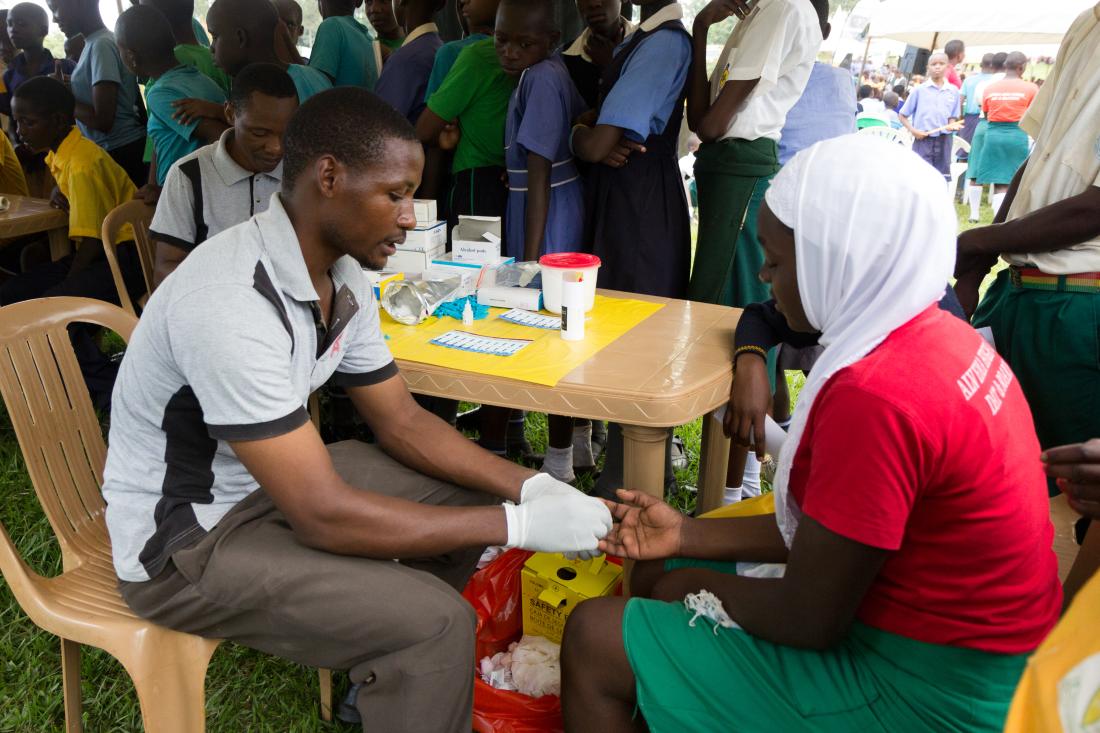Voluntary Counseling and Testing (VCT) to Reduce Risky Sexual Behaviors and Increase Schooling Investments in Malawi
- Women and girls
- HIV/AIDS
- Sexual and reproductive health
- Student learning
- Women’s/girls’ decision-making
- Aspirations
- Health care delivery
Despite large efforts to reduce HIV prevalence, Malawi has the ninth highest prevalence rate in the world. Researchers introduced a Voluntary HIV Counseling and Testing (VCT) program to young females in Malawi to determine whether the program affects risky sexual behavior and school performance. They found no overall effect of VCT on risk of sexually transmitted infections or achievement test scores. However, those who tested positive for HIV had increased rates of other sexually transmitted infections, and those who were surprised by negative HIV test results experienced a significant improvement in test scores.
Policy issue
Malawi has the ninth highest HIV prevalence rate in the world. To address this issue, Malawi’s National HIV Prevention Strategy implements a wide array of prevention interventions, treatments, and support initiatives. While the rate decreased from 12 percent in 2004 to 10.6 percent in 2010, the prevalence rate remains high relative to other countries in the region.1 One strategy to reduce HIV prevalence is through Voluntary Counseling and Testing (VCT) programs, which provide the opportunity for people to know their HIV status complemented by counseling and education support. Despite the belief that increasing awareness of HIV status has prevention benefits, there is little evidence that VCT interventions reduce the HIV incidence or other sexually transmitted infections (STIs).
Context of the evaluation
Malawi is among the poorest countries in Sub-Saharan Africa. More than three-quarters of its population live in rural areas and most are subsistence farmers. The per capita income in 2008 was US$760, far below an average of US$1,973 in the region. This study took place in Zomba district in southern Malawi, which has high levels of poverty, low school enrollment, and high HIV prevalence, even in comparison to the rest of the country.
Universal HIV testing is promoted as a way to encourage HIV positive individuals to receive antiretroviral therapy which often reduces morbidity and mortality rates, as well as the risk of HIV transmission. Although surveys in several African countries report that over two-thirds of individuals who did not know their HIV status would like to get tested, the proportion of adults who actually utilize the available testing services is much lower, below 15 percent in some areas. Even when individuals choose to have an HIV test, many do not return for their results.

Details of the intervention
Researchers examined the effect of a home-based voluntary HIV testing and counseling (VCT) intervention on risky sexual behaviors and schooling investments among school-age females in Malawi. In addition, researchers explored whether the effects of testing differed by HIV-status (HIV-negative/positive test), as well as the effects of being surprised by the test results. That is, those who believed they were HIV-negative (HIV-positive) but received a positive (negative) test result.
Of the 88 clusters (approximately 250 households per cluster) that participated in the study, 52 were randomly assigned to receive the VCT program. As part of the program, a nurse and trained counselor visited the homes of participants and offered counseling and rapid testing for HIV, Herpes Simplex Virus (HSV-2), and syphilis. Approximately ten months after the initial VCT offer, all 88 clusters were offered VCT.
Results and policy lessons
Overall acceptance of VCT was high (98 percent) for both the initial treatment groups and the comparison group who received VCT ten months later. However, VCT had no significant impact on the prevalence of HIV, HSV-2, or test scores. Moreover, there were no significant changes in self-reported outcomes such as subjective life expectancy, likelihood of HIV infection, school enrollment, or unsafe sex, and a small increase in the likelihood of being sexually active during the previous twelve months. Overall, the results suggest that the VCT intervention did not have any significant effects on STI risk or investments in human capital in the study population.
While the VCT program has no overall effect on STI risk or achievement test scores, the results are starkly different for various subgroups. For example, among the 73 individuals who tested HIV-positive at baseline, HSV-2 prevalence was 23 percentage points higher in the VCT group compared to the 25.5 percent prevalence in the comparison group – suggesting that individuals increased risky sexual behavior in response to knowing they were HIV-positive. On the other hand, individuals who believed they were HIV-positive at baseline but were surprised by HIV-negative test results, experienced a significant improvement in achievement test scores.
While HIV testing plays an unambiguously important role as a gateway to important antiretroviral therapy (ART), its direct behavioral effects appear to be complex and not uniformly protective.



